Key in a search term below to search our website.
Key in a search term below to search our website.
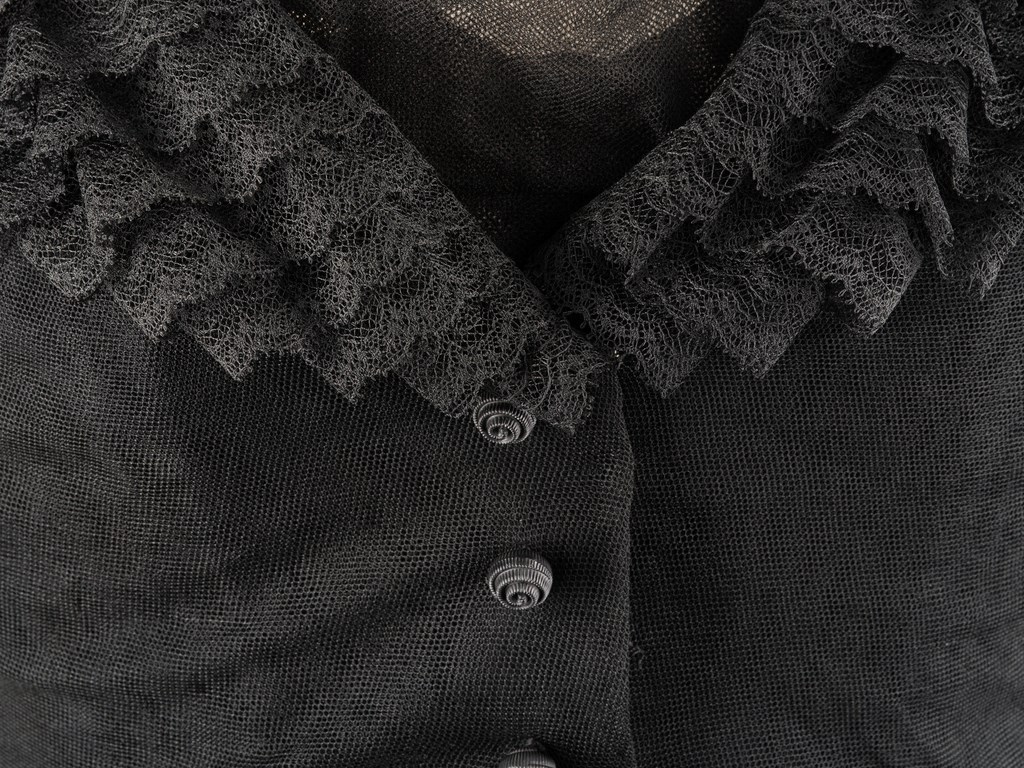
Detail from the "Black Swan" cocktail dress by Yves Saint Laurent for Christian Dior, Spring/Summer 1959 (K.2018.4.1).
The ‘Little Black Dress’ – or ‘LBD’ – first captured the fashionable imagination in the 1920s, as a radically modern, masculine-inspired style, free from the earlier constraints on women’s dress.
Our exhibition, Beyond the Little Black Dress (until 29 October), brings together 65 looks from museums and designers around the world. Over one third of these looks come from the museum’s permanent collection – representing a chance both to showcase some of our collections held in storage and to acquire new pieces for the national collection. Examine its evolution and reinvention in popular culture in the 20th and 21st centuries, through garments from our collection.
The colour black is open to myriad interpretations. Simultaneously expressive of piety and perversion, respect and rebellion, it can be influenced by factors such as cultural background, faith, gender, political affiliation, or economic situation. As such, the LBD is a blank canvas on which to project identity and cultural meaning.
The LBD has long been a shorthand for good taste. In 1954, Christian Dior’s The Little Dictionary of Fashion declared it appropriate to wear black at any time, any age and for almost any occasion. At once the cloak of mourning and the uniform of the chic socialite, it is also a symbol of sexual sophistication. Paradoxically, the LBD is viewed as modest and polished, bold and alluring – treading a delicate line between respectability and rebelliousness.
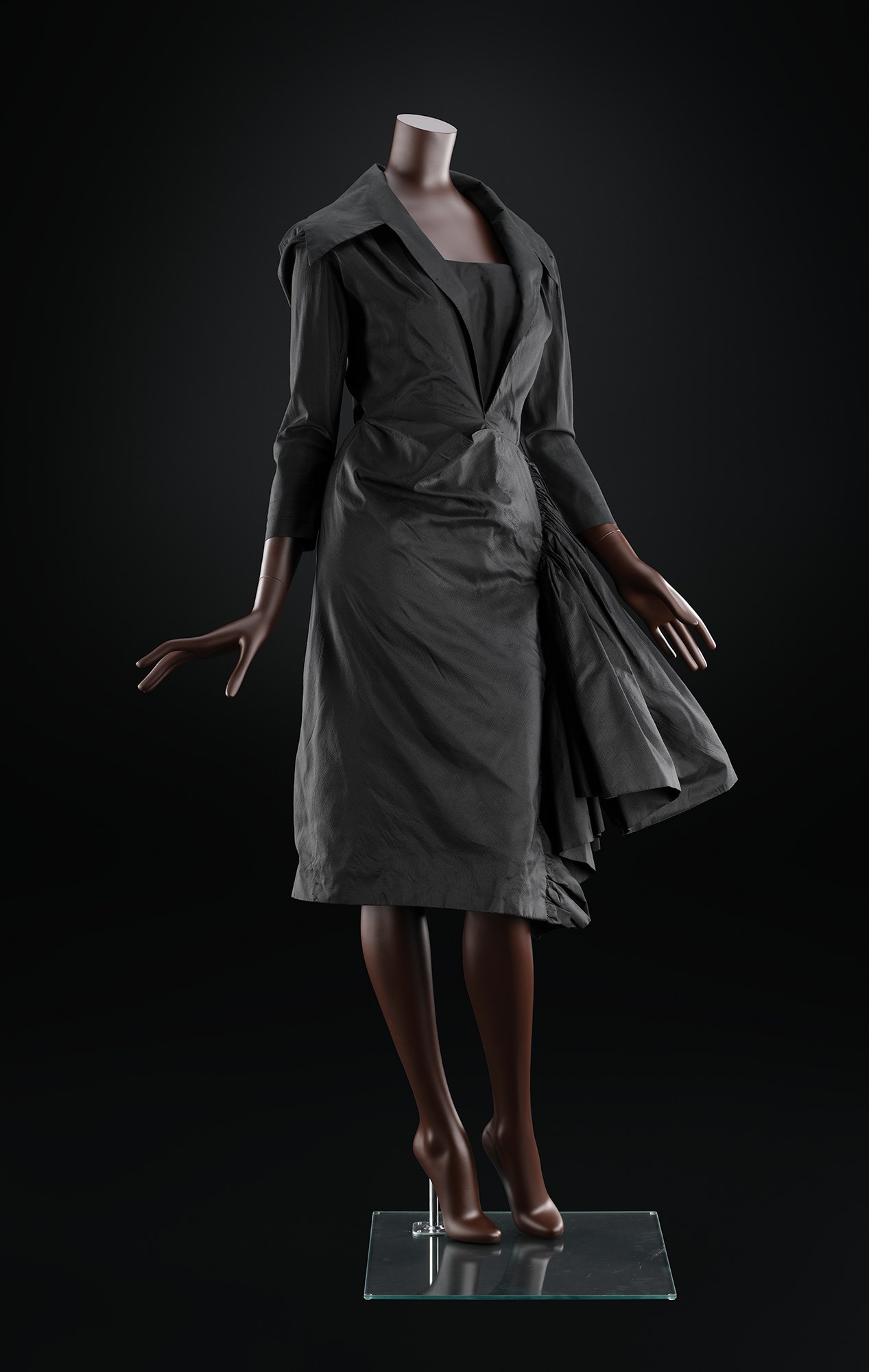
Woman's “Ligne Longue” cocktail dress by Christian Dior, Autumn-Winter 1951-52 (K.2018.3.1-2).
Fashions of the 1920s shunned the constraints society imposed on women, reinforcing new ideas about liberated womanhood in the post-war period. In 1926, Coco Chanel introduced a famously simple, black day dress, which American Vogue hailed as ‘the frock that all the world will wear’. It was the epitome of modern womenswear – loose, comfortable and relatively unadorned. Until, in 1947, Dior’s ‘New Look’ revived a voluptuous femininity in women’s dress that straddled the demure and the erotic, based on tight corsetry, voluminous skirts and pointed brassieres.
In the mid-20th century, the LBD had become synonymous with the ritual of the cocktail hour. Originating with prohibition in the 1920s, the cocktail hour had quickly become a daily ritual for which society women needed a new wardrobe. By the 1950s, Dior himself defined the perfect cocktail dress as elaborate ‘afternoon dresses’ in black taffeta, satin, chiffon and wool. In 2018, we acquired this Ligne Longue cocktail dress of black silk faille by Christian Dior, dating from Autumn/Winter 1951 – one of the first additions we made to our permanent collection with the exhibition in mind.
The formidable former editor of Vogue, Diana Vreeland, once said that black is the hardest colour in the world to get right. Its starkness focuses the eye on the core elements of design – texture, tone, and silhouette. By turns opaque or transparent, matte or shiny, the play of light across the surface of the textile can reveal or conceal design details, while the absence of colour accentuates the architecture of the garment. With nowhere to hide, the designer’s technical skill is paramount.
Designers like Cristóbal Balenciaga, Yves Saint Laurent, and Jean Muir are united in their reverence for the craft of dressmaking and are especially renowned for their mastery of the little black dress. Their innate understanding of the properties of specific fabrics allows them to eliminate superfluous lining and underpinnings, constructing garments so sophisticated that they have transcended fashion’s changing trends.
Dress of black suede, by Jean Muir Ltd, c. 1970s (K.2005.649.1392.1-2)
Jean Muir is famed for her timeless, sensual designs in her signature fabrics of matte jersey, wool crepe, buttery soft leathers and suede. This 1970s shirt dress of black suede was selected from Miss Muir’s extensive archive held by the National Museum. It sits under the theme of ‘Designing in Black’ alongside a sumptuously embellished silk robe de style by Jeanne Lanvin dating to 1926, and a late 1950s ‘Cygne Noir’ (Black Swan) evening dress of black tulle and lace, designed by Yves Saint Laurent for the House of Dior.
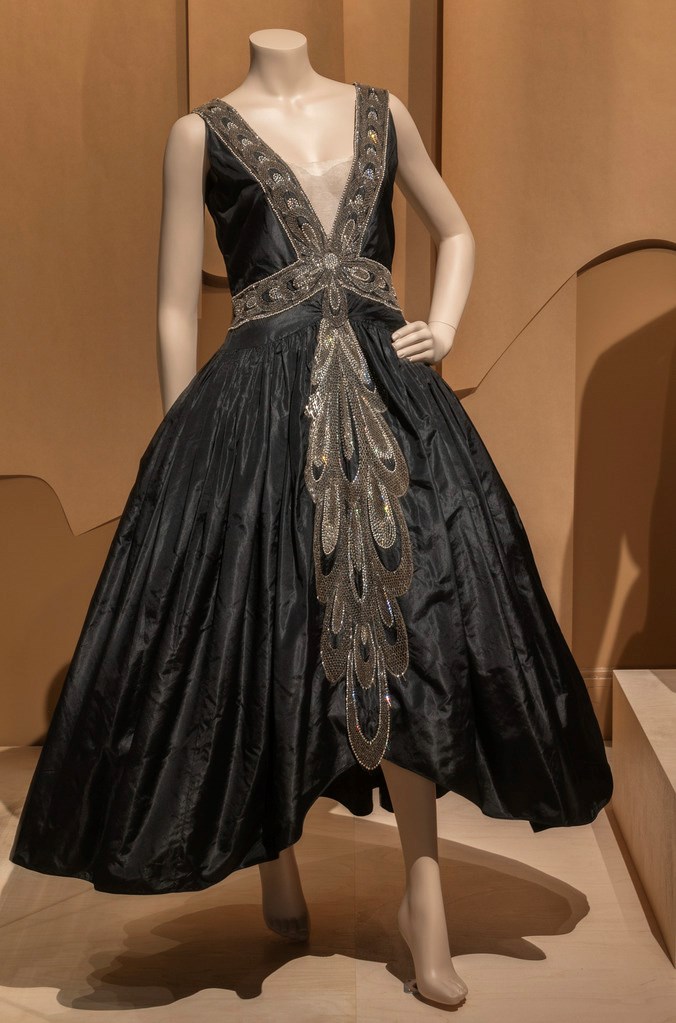
Robe de style, by Jeanne Lanvin, Autumn/Winter 1926 (A.1965.631).
Yves Saint Laurent was an exceptional colourist but his LBDs and Le Smoking tuxedos formed the backbone to his collections. Following Dior’s death in 1957, Saint Laurent was appointed art director for the famous house. This dress was named after the character of Odile in Swan Lake who in the 1940s became known as ‘the Black Swan’, inspiring many couture creations.
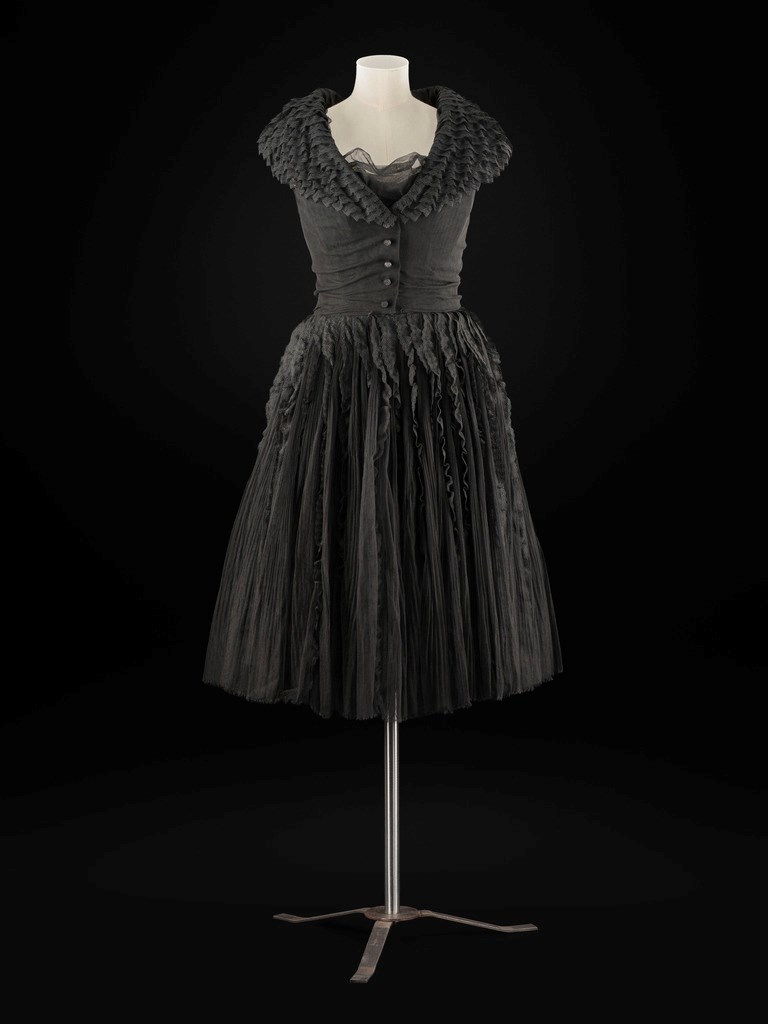
"Black Swan" cocktail dress by Yves Saint Laurent for Christian Dior, Spring/Summer 1959 (K.2018.4.1-2).
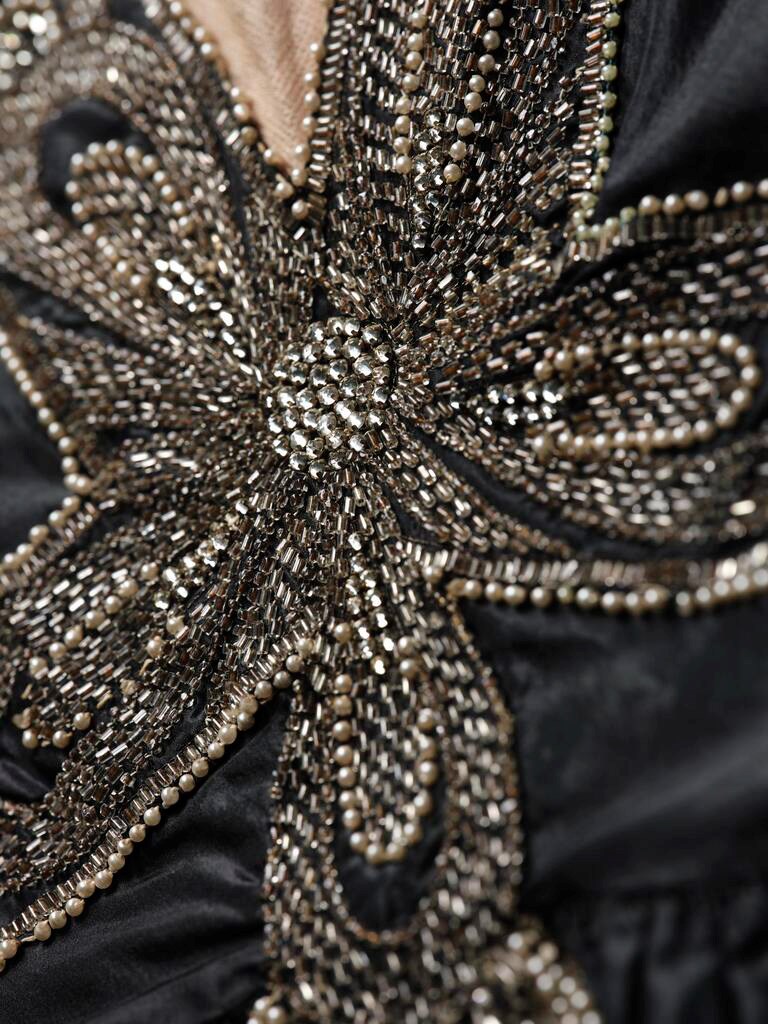
Detail from the Robe de style, by Jeanne Lanvin, Autumn/Winter 1926 (A.1965.631)
Black has long held symbolic associations with rebellion and transgressive behaviours. The colour of nihilism, revolution, and solidarity, it has been adopted by various 20th century subcultural movements, from punk and goth to streetwear. It has also always been imbued with a seductive power, by virtue of its cultural association with sexual subcultures, and the erotic thrill of the socially ‘taboo’. In the 1980s, fetish signifiers were readily assimilated into mainstream fashion, seen as a subtext to sharp-suited power dressing. Bondage-inspired details and primarily black, ‘second-skin’ fabrics such as leather and rubber, flaunted sexuality as empowerment. Yet, they have also been critiqued as degrading and misogynistic.
Contemporary debates around sex-positive clothing are about not only subversive design, but also disrupting society’s restrictive beauty ideals. Irish designer Sinéad O’Dwyer’s debut at London fashion week was a celebration of female agency and body positivity in an industry that has long promoted exclusive body ideals. O’Dwyer uniquely works in a sample size 18-22 and her sex-positive Spring/Summer 2023 collection pioritised comfort and subversive design equally, championing all bodies as equally desiring and desirable. Working with casting director Emma Matell to challenge the body dysmorphia inherent to contemporary fashion, O’Dwyer street cast models whose sizes ranged from 8 to 26, and which included two wheelchair users - Naadirah Qazi and disability activity Emily Barke. The garments evoked a fetishist aesthetic with ‘shibari’ or Japanese rope bondage-inspired elements, while the accessories contain hidden symbols such as references to the sexual metaphor of the cello.
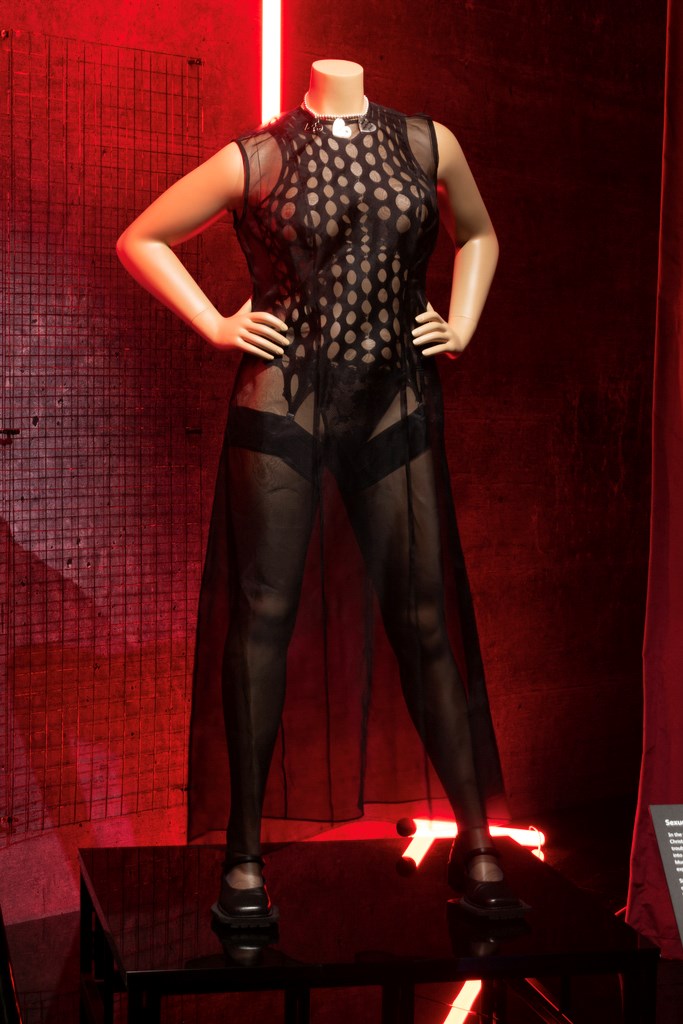
Sinead O'Dwyer ensemble from Spring/Summer 2023 collection (V.2023.58.2)
Intrigued by O’Dwyer’s design practice, the National Museum acquired look 29 from her Spring/Summer 2023 collection, comprising the ‘Rib-knit Squiggle Suspender Top’, ‘Naked Dress’ of silk organza, sterling silver choker and mini hoop earrings, and Mary-Jane shoes. O’Dwyer’s approach starts with the model rather than the garment, utilising a method she developed while studying for her Masters at the Royal College of Art, where she presented silicone body casts as wearable art. From a design perspective, O’Dwyer’s mission is more difficult: she works from numerous block patterns at once and uses a range of around seven fit models instead of the standard one. It represents a lengthy process of data-gathering and O’Dwyer’s commitment is such that she chooses to reduce the number of items she is making each season, to focus instead on achieving a wide range of sizes per style. Referencing her own experience with body dysmorphia, she is acutely aware of the impact it has on mental health when luxury fashion excludes the majority and is therefore focused on developing innovative techniques to design flexibly for differently sized bodies, creating space within the pattern for curves rather than attempting to erase them.
Fashion’s fascination with fetishwear illustrates how trends have fluctuated according to the sexual politics of an era – especially considering that the rising hemlines of the 1920s incited scandal enough.
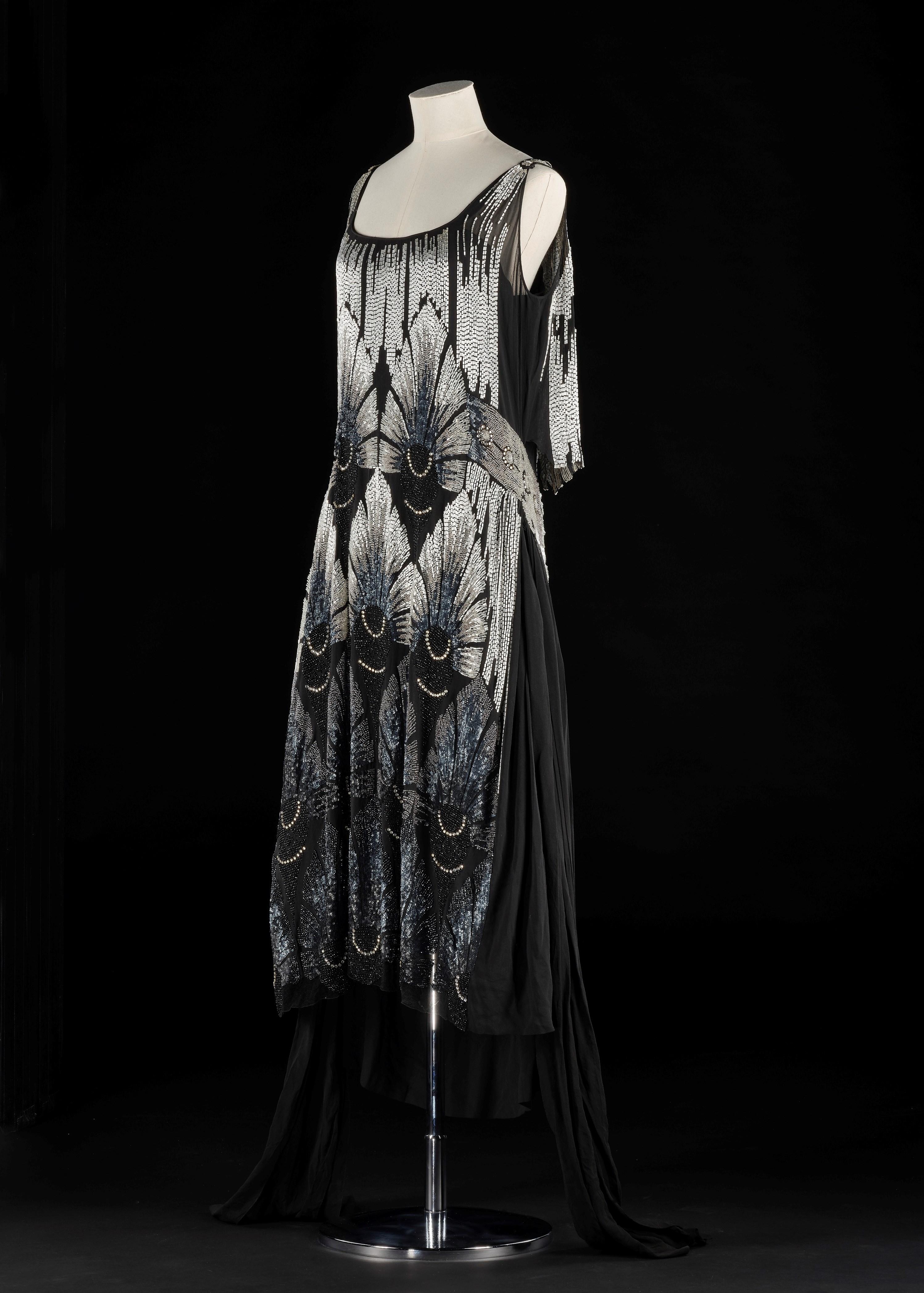
Woman's evening dress of black chiffon by an unknown French designer, c.1929 (A.1965.629)
Beginning in the 19th century, the suffrage movement, followed by more women entering the workforce during the First World War, led to a greater independence for women that was reflected in styles of dress. The shortened hemline and androgynous – or la garçonne – silhouette of 1920s ‘flapper girl’ fashions empowered women to rebel against feminine norms but also aroused controversy, partly due to social anxieties around changing gender roles.
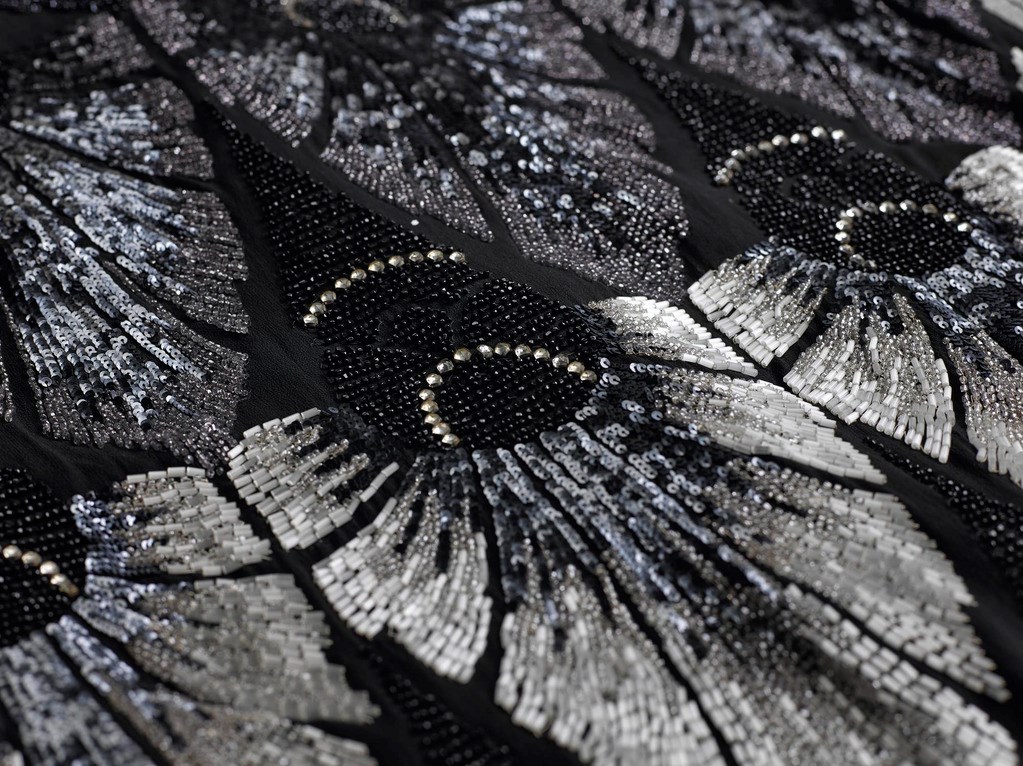
The implied sensuality inherent in the colour black is in part due to its association with sin, as underscored by the teachings of the early Christian Church. Historically associated with demonic cults and witchcraft, black as the personification of the dark unknown has morphed into a trope of evil. Yet in ancient Egypt, as in other parts of Africa and Asia, black had both positive and negative associations. Simultaneously symbolic of life and death, it was linked to the fertile aspect of the earth, the passage to the afterlife, and the promise of rebirth.
The religious sphere and the multitude of belief systems have powerfully influenced the fashion for black. Contemporary fashion designers in the West often borrow creatively – and provocatively – from the disparate practices of Roman Catholic Christianity, occultism and Paganism, with designs that bridge the sacred and the secular.
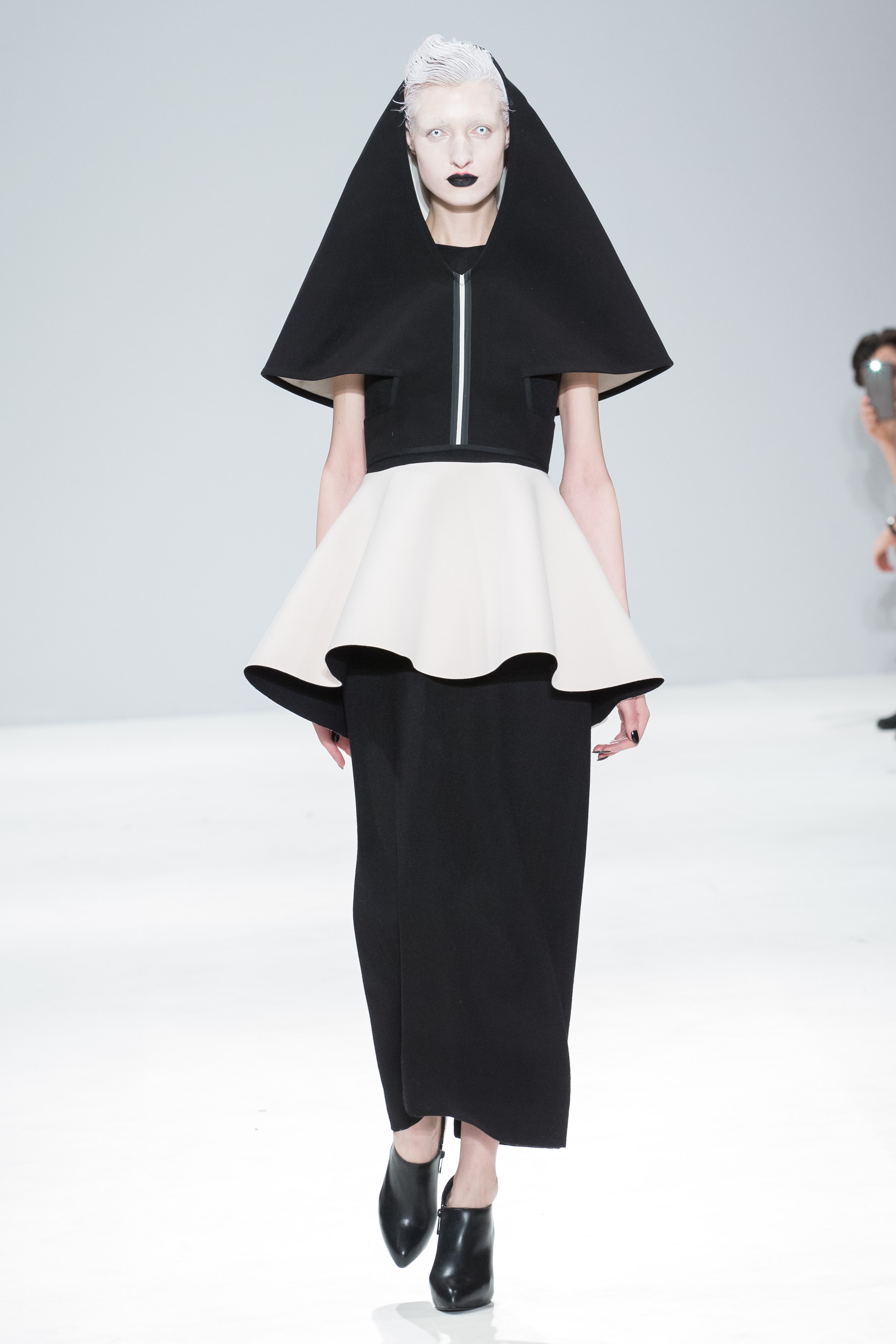
‘Florence Hood’ and ‘Spray Dress’, by Cimone, Autumn/Winter 2017 (K.2020.14.1-2)
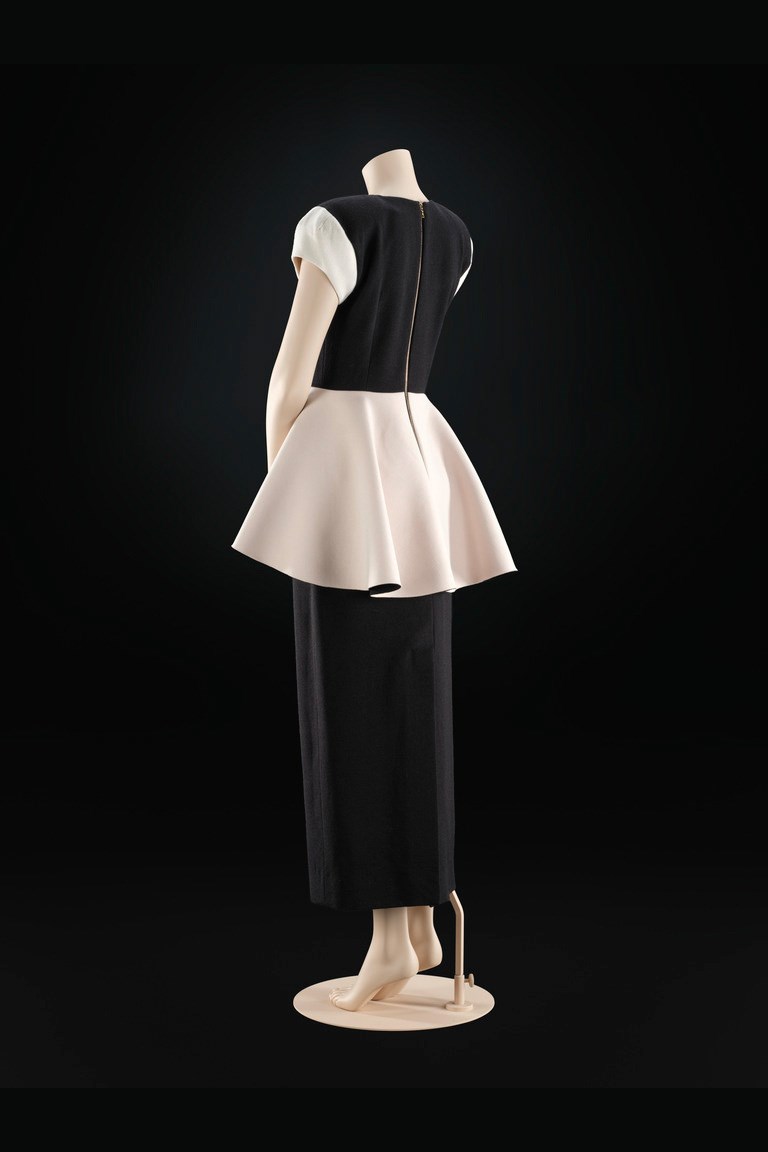
Black’s inherent monastic virtue, evident in the Catholic priest’s cassock and in the nun’s habit, has held a particular allure for designers. London label Cimone’s Autumn/Winter 2017 collection featured several looks with religious references, not necessarily tied to any one faith but inspired by the notion of the undead, or the question of life and spirit continuing. This ensemble, acquired by the National Museum specifically for this theme of the exhibition, references the severity of the Benedictine nun’s habit, but the styling suggests a playful, even sacrilegious subversion of Catholic iconography. The fitted waist emphasises the concealed body, reflecting the designer’s fascination with the provocative nature of the untouchable.
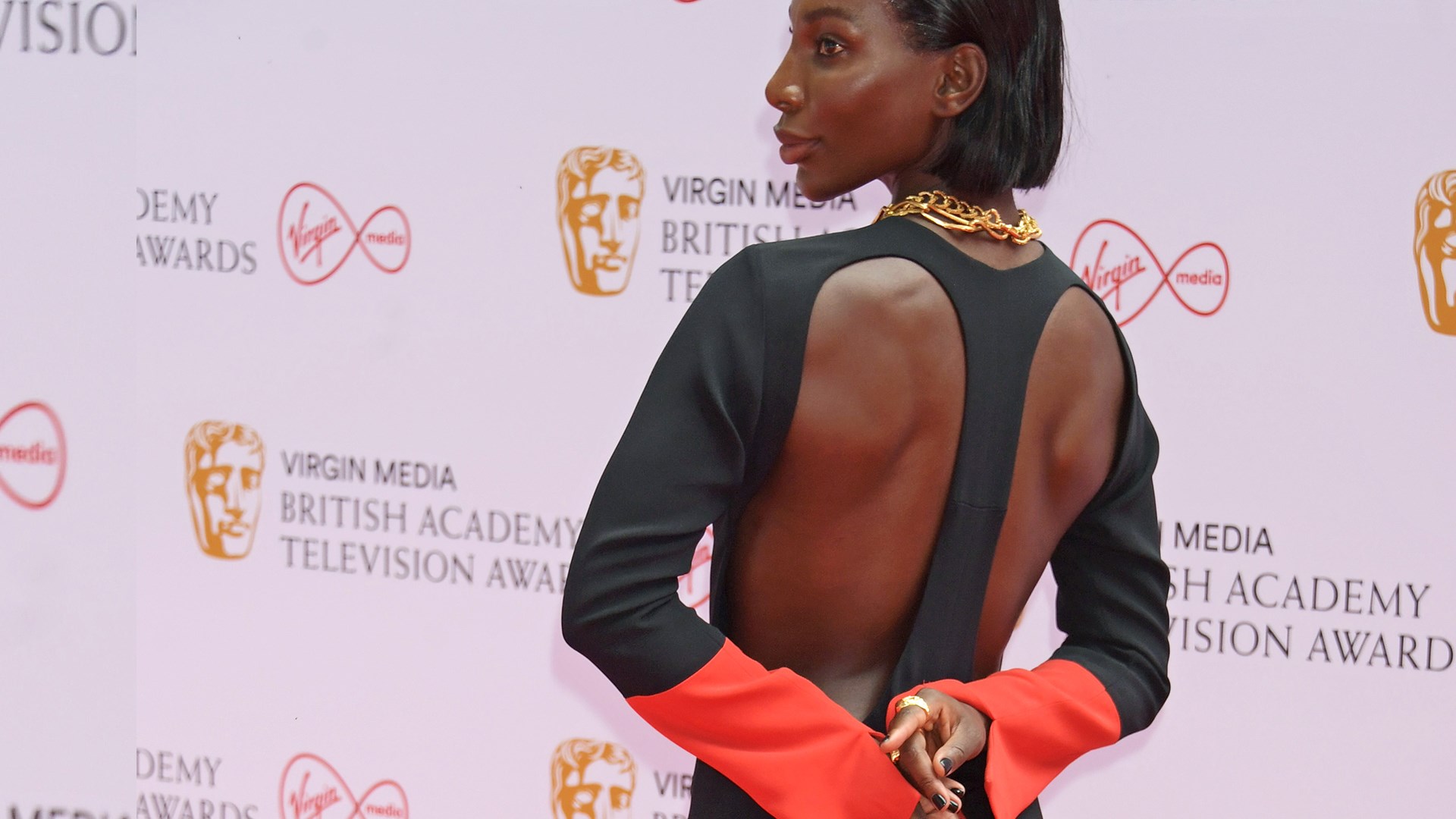
Silk-Cady Dress, by Maximilian, J’ouvert collection, Spring/Summer 2021. (K.2021.32) Michaela Coel arrives at the Virgin Media British Academy Television Awards 2021 in Maximilian dress red cuffs. Photo by David M. Benett. © Dave Benett Getty Images
Delving deeper into the binary of black as evil and white as pure, partially constructed in Western consciousness by the influence of Christianity, the exhibition seeks to also explore black as a colour, a culture, a construct, and a global diasporic community. The exhibition co-curator Sequoia Barnes worked with us to introduce a new theme to the exhibition, ‘Black Futures’, reconsidering ways of seeing and connecting to clothing through the lens of black and Blackness. Her selection explores the monochromatic, Afrofuturistic fashions created by seven leading Black British (or UK-based) fashion designers.
Afrofuturism has always been fluid in definition and style. It can be characterised as the creative use of technology and tropes of science-fiction to explore Black diasporic cultures, experiences, and concerns. Combined with symbols from the Black diaspora, the works created decolonise time and imagine liberatory futures. Afrofuturism also deconstructs meaning. In fashion, this encourages us to explore what a dress could be, what ‘dress’ can mean, and to identify and address racial, gendered and other expectations when it comes to ‘dressing’ up.
The designs of menswear brand A-COLD-WALL* are the epitome of when techwear meets Afrofuturism. British artist, designer and multidisciplinary creative director, Samuel Ross, founded A-COLD-WALL* in 2014 after working as Virgil Abloh’s design assistant. Through his label, Ross explores the societal issues, disparities and realities faced by people living in inner-city London, creating an aesthetic informed by his studies in graphic design, the British class systems and Brutalism.
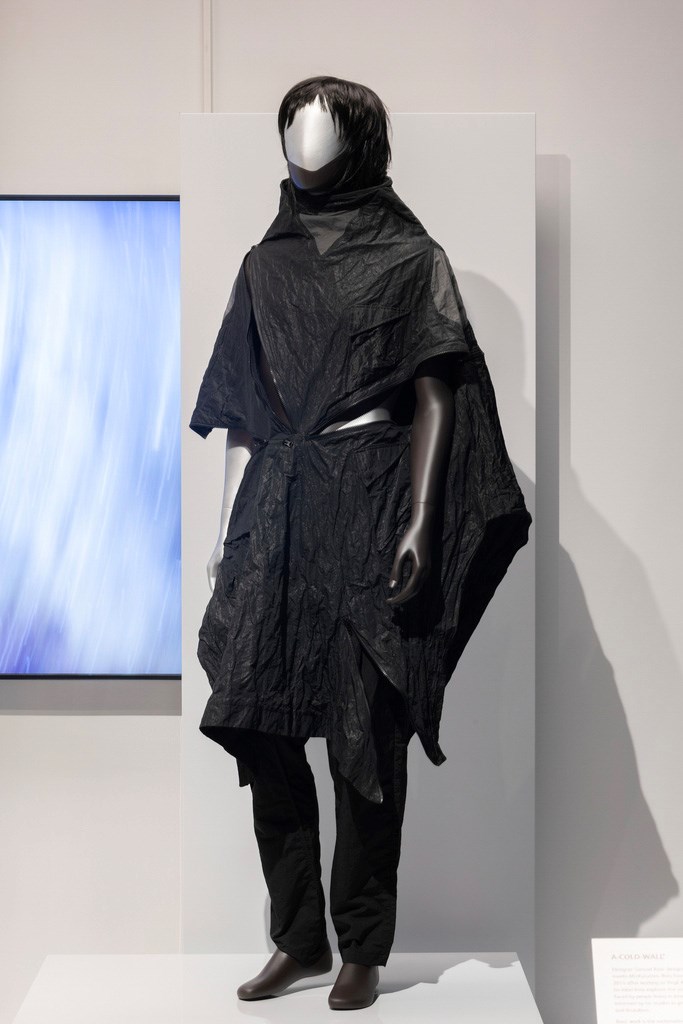
'Concept Poncho' by A-COLD-WALL*, Autumn/Winter 2022 V.2023.31 & V.2023.66
Ross’ work is the exclamation point of this Black Futures theme. This ensemble was generously donated to the National Museum’s fashion collection by the designer. In this display, it represents the most overt example of Afrofuturism’s appropriation of science-fiction tropes and cyborg aesthetics. The styling of the ensemble, recreated on the mannequin from the designer’s original presentation, blurs human and post-human with distorting yet severe angles, textured surfaces, and chrome body paint.
Fashion is one of the most energy-consuming, polluting, and wasteful of modern industries, exacerbated by cycles of endless consumption. In response, contemporary designers are seeking more sustainable solutions from cutting-edge technologies to nature-led approaches.
Pioneering eco-designers and climate activists, VIN + OMI, launched their brand in 2004, using fashion to challenge both industry and consumer perceptions about more sustainable ways of living. Significantly, they show outside of London Fashion Week, staging their own catwalk a day before the official schedule starts in a rejection of the traditional fashion system that’s driven by commerciality. The VIN + OMI manifesto is about continuing to seek unique solutions to a problem, pioneering new processes and programmes and tracking their carbon footprint and the energy used (even down to the calories expended in the making of a garment). While they have dressed countless celebrities, they are also known for their social impact and environmental work that includes global waste plastic clean up schemes that benefit the local communities that work with the brand to turn the plastic into textile or products and work towards a cleaner environment.
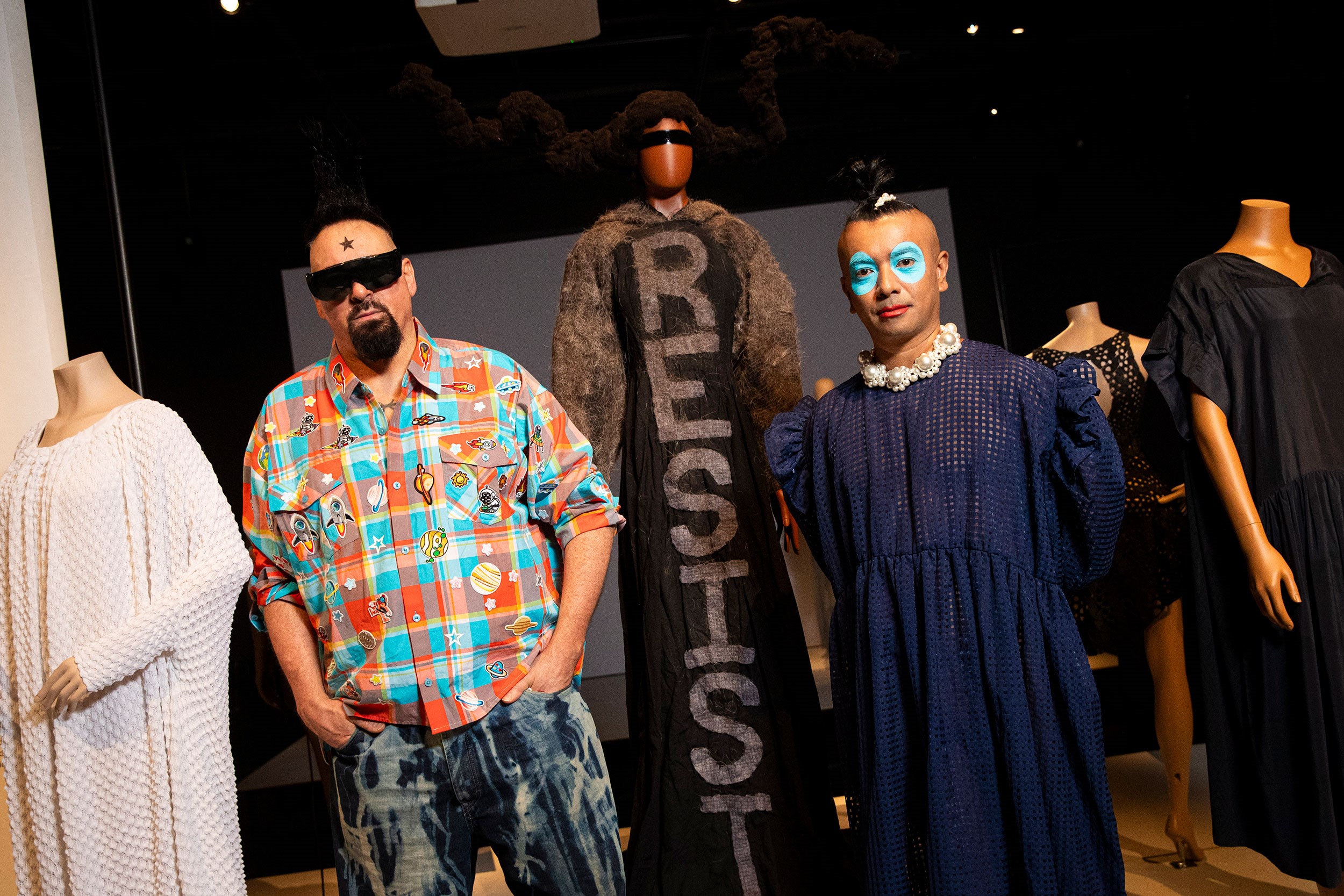
Designers and climate activists VIN + OMI with their 'RESIST' dress, specially commissioned for Beyond the Little Black Dress.
At VIN + OMI’s studio HQ in Norfolk, they grow a range of crops and plants for textile development and research. Since 2004, they have developed 32 unique to market textiles based on sustainable, eco-processes. These include unique rPET and hybrids made via their ocean and river waste plastic collection schemes, as well as sustainable, organic, and ethical latex sourced from their own plantation in Malaysia. They also have a strong focus on textiles and products made from UK waste plant source including pioneering ‘leathers’ made from chestnut, mushroom and seaweed, and their ground-breaking, award-winning nettle textile made from waste nettles from King Charles III’s Highgrove estate. With this impressive CV behind them, the National Museum commissioned VIN + OMI to create a unique piece in response to the exhibition.
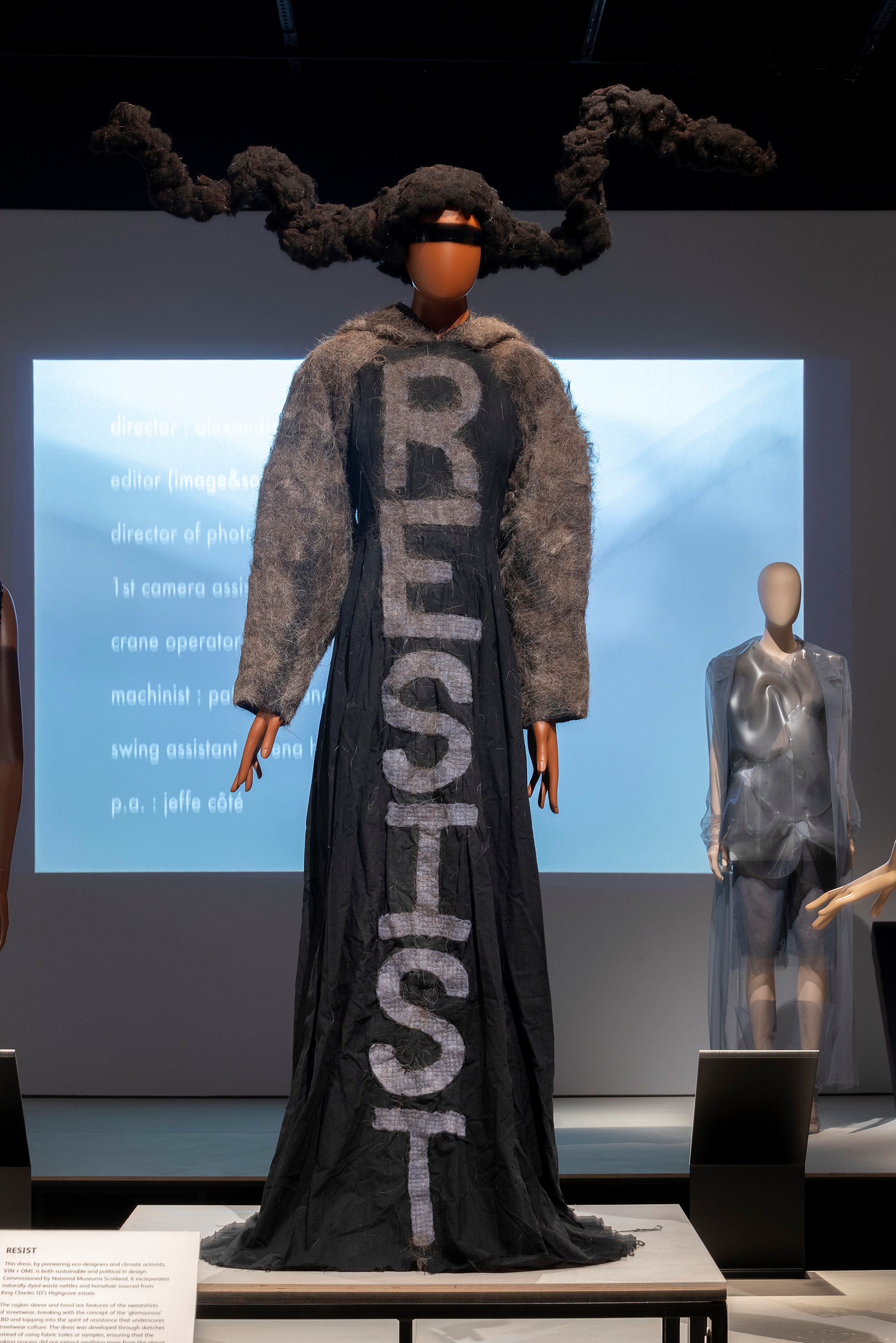
'RESIST' dress was commissioned by National Museums Scotland and featured as the finale to the Autumn/Winter 2020 catwalk show by VIN + OMI (V.2023.60). Headpiece by Bea Carmichael.
The finished dress featured as the finale to VIN + OMI’s Autumn/Winter 2020 catwalk and is both sustainable and political in design. Its design incorporates naturally dyed waste nettle fibre and horsehair sourced from Highgrove. The raglan sleeve and hood are features of the sweatshirts of streetwear, breaking with the concept of the silky, ‘glamourous’ LBD and tapping into the spirit of resistance that underscores streetwear culture. The dress was developed through sketches instead of using fabric toiles or samples, ensuring that the making process did not extract anything more from the planet. In this it remains true to VIN + OMI’s ideology that design must always come second to the environment.
Just as the fashionable black dress became a practical and versatile option for women during the Second World War, doubling up as mourning wear and a formal afternoon dress, today the LBD is still considered an essential component of the capsule wardrobe and a keystone of slow fashion. In all its derivations it has absorbed countless trends from across the fashion spectrum, capturing and revealing changing definitions of gender, sexuality, ethnicity, status, and class.